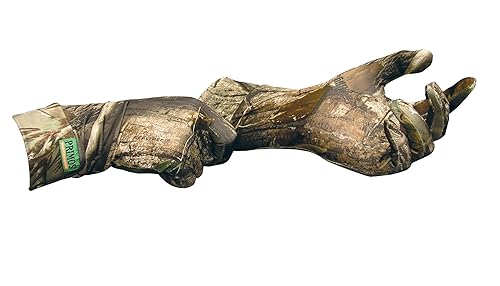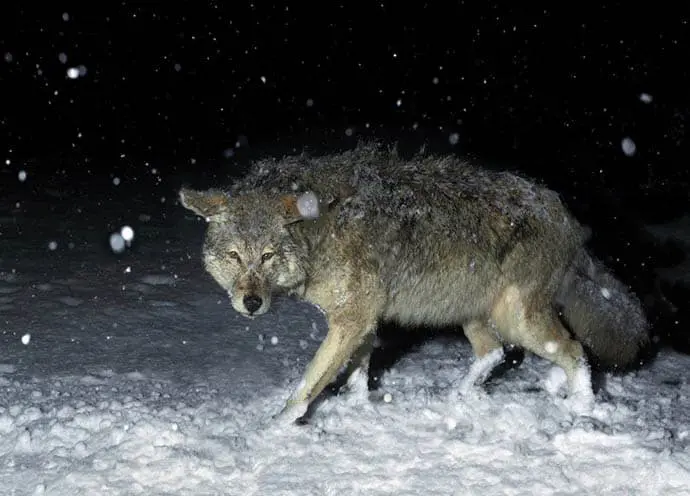
With so many breeds of working dog available to the prospective hunter, it can be hard to single out the best bird dogs. If you’re looking to add a lively companion to your home, however, you might want to consider one of the following in your quest to find the perfect gun dog to take with you in search of game.
Top 7 Best Bird Dogs
1.) Brittany one of good bird hunting dogs
One of the most renowned bird dogs in the world is undoubtedly the Brittany. Originally called the Brittany Spaniel they’re an energetic, medium sized breed of dogs which is easy to correct while training.
While most spaniel breeds are generally considered to be flushing dogs, the Brittany is primarily a pointer. This means that it will stand stock still upon coming on birds. In Britain they’re generally considered to be an HPR breed, meaning they’re expected to hunt, point, and retrieve.
There’s a reason that the Brittany is deemed such an amazing hunting dog. They’re also an exceptional companion, if a somewhat needy one, and you’ll have to devote a considerable amount of time to them.
Their reputation is well deserved however, if you can put up with them you’ll have a dog that’s a great companion and the perfect accompaniment for any fowl hunting you might participate in.
Related: Best Duck Hunting Dogs
2.) German Shorthaired Pointer
The German Shorthaired Pointer is another canine which is famous for it’s working temperament. They’re high energy and range from medium-to-large in size as well, makingthem suitable companions on hunts for larger birds.
They’re an extremely active breed, not a dog that you’ll want to leave around the house very often. If you’re engaged in other athletics along with hunting, then you’ll want to take them along otherwise their pent-up energy can be released in destructive ways.
Of course, that’s not all bad. A German Shorthair is a fast and capable companion, you’ll have to be quick on the draw to even reach your binocular harness before they’re out of sight.
They’re a true working breed, however, and they’re very good at pointing. Like most pointing dogs they’ll naturally be interested in birds of all types, which combined with their high intelligence level makes for a dog which is invaluable while in the field.
Their ability to work is pretty much biologically hardwired into their system, which makes them hardworking and dependable in the field but does require them to be more than an occasional guest on your outdoors adventures.
They’re probably best for the hunter who is active year round, but if you can keep up with them then you’ll have an even-tempered hound that makes a valuable asset while in the field.
3.) Chesapeake Bay Retriever
The Chesapeake Bay Retriever is particularly of interest for those who like to hunt larger birds and waterfowl. Like their name suggests, they can be trained to easily chase down prey after you’ve landed a shot which makes things quite a bit easier on the hunter.
They love being outside, and like most retrievers are fond of swimming. They’re extremely active dogs as well, which combined with their large size and confident demeanor means that they’ll need some extra training.
They tend to be the most territorial of the retrievers and their hunting instincts are still well intact in most breeding lines. This means that you’ll definitely want to make sure that you do work them and they have high exercise requirements year round.
They’re not always the perfect dog for those who expect a hunting dog to be obedient to a fault and they’re consistently outperformed in field contests by other breeds, but the truth is they deserve a place on any listing of the best bird hunting dogs.
Their smarts and stubbornness can actually work out well for their owner, but if you find the high activity levels required and the idea of large, independent dog frightening then they may not be what you’re looking for. The rest of us will have a loyal, active working dog which is perfect for hunting water fowl and larger birds.
4.) English Cocker Spaniel
The English Cocker Spaniel is a renowned flushing dog, and you’ll find that most of them can retrieve prey as well as chase it out. They’ve earned their nickname of “Merry Little Hunters” and anyone watching one in the field will quickly become enamored of their constantly wagging tail.
While many hunting dogs have exercise requirements which might push most of their humans to the limit, the English Cocker Spaniel doesn’t quite go that far. They’re certainly high-energy and athletic, but don’t require as much exercise as many working breeds.
The main drawback that most people will find is with the longer coat. They do require quite a bit of brushing and they’ll tend to shed a bit more than most people like. If you can put up with a bit of hair left behind by your hunting companion, however, they’re a great dog that can accomplish pretty much everything short of hauling a wounded goose.
They’re not the most specialized hunting breed in the world, which is often an advantage to the modern hunter since most of us don’t only go out after one type of prey throughout the year. They also tend to be rather obedient and a bit submissive, which works for those who don’t like stronger willed dogs.
If you’re willing to put up with the fur, most hunters will find them to be a boon while you’re hunting.
5.) Golden Retriever
Golden Retrievers are one of the most renowned breeds of dog. From their attractive coloration to their reputation for being amazingly social and friendly, they’re an ideal companion.
The fact of the matter is, however, they were originally bred as hunting dogs and certain lineages still display an amazing aptitude for it. The problem, of course, is making sure that you buy from a breeder who specializes in hunting dogs instead of one who has been bred as a family companion.
They’re definitely large enough to handle any kind of retrieving, however, and a good Golden Retriever is simply hard to beat when you’re in the field.
If you choose carefully, there’s almost no drawback to owning one as both a hunting dog and a family pet. They tend to mellow once they’ve matured, and while they’ll require normal dog maintenance they aren’t as high energy as many, more specialized breeds and they get along with pets of pretty much any type.
There may be better hunting dogs out there, but if you want a dog to go hunting with when the season is in without a whole bunch of extra maintenance the Golden Retriever is one of the best all-around pets you can own.
6.) Weimaraner
The only reason Weimaraners are less common than they should be in hunting circles has to due with the dog’s temperament. It’s not a bad thing, by any means, but these dogs were one of the few hunting breeds which were kept with the family during the day which can make them a little bit more time consuming and needy than other dogs.
The Weimaraner was originally used as a hunting dog for large game, and they’re a noble-looking breed which befits their storied history. Unfortunately, they suffered from some over-marketing in the US as a “miracle breed” which caused many to disregard them since they didn’t live up to the hyper… no dog could.
What they are is an impressively fast and powerful animal. Trust us, the first time you try to follow one with your Hunting Binocular you’re going to be rather surprised.
They need a lot of time and attention, but if it’s given to them they can be one of the best hunting dogs around. They’re generally considered as a pointer, but in truth they can be trained for any aspect of the hunt.
They’re not a good idea for those who have other pets as well, their hunting instincts are quite dominant and to train them for a specific type of game will require a lot of work on the part of the owner. On top of that, they’re definitely a “one-person” type of dog which can make them unattractive to those with families.
When properly trained, however, it’s rare to come across a more exuberant and skilled hunter. If you have the time to devote to them, you’ll be repaid with an amazing hunting dog and a fiercely loyal companion. There’s a reason many hunters use them to the exclusion of any other breed, just be aware of the drawbacks if you go with this breed.
Related: Best Rubber Hunting Boots
7.) Vizsla
Vizsla are an impressive sight to behold. They’re a renowned hunting dog of Hunagrian origins, coming in a tightly muscled, copper colored package of manageable size. They take to the hunt like ducks to water, and many people find them indispensable in the field.
While many dogs are quite far removed from their breeds origins, the Vizsla is primarily still bred as a hunting dog. They’re considered to be some of the best “all around” dogs, meaning they can participate in flushing, pointing, and retrieving with minimal difficulty.
They’re also a bit smaller than most other dogs which are considered “all-arounders” which can be a bonus for those without a lot of room. A smaller dog doesn’t mean lesser requirements for exercise, however, and they’ll require a whole bunch of it at the end of the day.
Like all pointing dogs, they tend to require a bit of training to overcome their independent nature but this can also be an asset in the field.
As long as you can handle the exercise requirements of the breed, they make for a fine bird dog. The only issue is that if you live stateside you’ll find they’re hard to acquire and you’ll need to find a breeder who hasn’t inbred their breeding population to avoid later health issues.
As both a pet and a friend for the hunt, however, you could do a whole lot worse.
Conclusion
There are a lot of breeds of dogs which make great companions when you’re chasing after game poultry, and each dog and hunter is an individual. This makes actually choosing the best bird dogs a bit hard, but of the above breeds one is certain to meet the requirements of almost anyone.
Did we leave out your favorite breed? Interested in learning more? Leave us a comment below.















